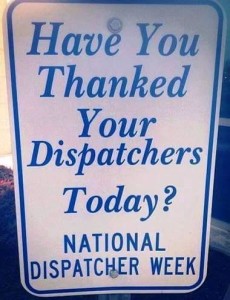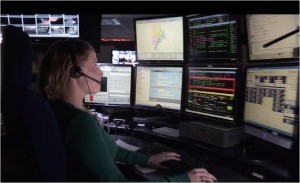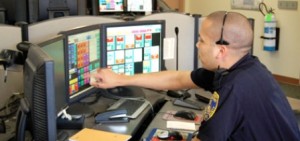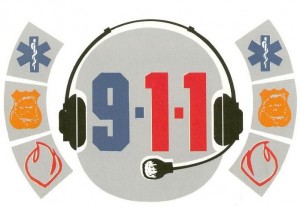By: Robert Avsec, Executive Fire Officer
This week, April 12-18, is National Public Safety Telecommunicators Week (NPSTW). Bet you didn’t know  that, did you? That’s okay, I’m thinking you probably don’t know what a Public Safety Telecommunicator is either. And in respect to both, you are not alone.
that, did you? That’s okay, I’m thinking you probably don’t know what a Public Safety Telecommunicator is either. And in respect to both, you are not alone.
The Public Safety Telecommunicators who answer the 911 calls (911, do you have a police, fire or medical emergency?) in our communities are like the smoke detectors in our homes: we don’t think about them, but when they’re needed…they’re needed. The PST is the critical communications link between those who need help (the person who calls 911) and those who can render help (law enforcement, fire, or EMS).

Whatever you do, don’t call them a dispatcher! Today’s Public Safety Telecommunicator is much more than “just a dispatcher” (although, unfortunately, there are still too many public safety first responders who have that mentality). The modern PST receives professionally developed training to become certified in the various telecommunications disciplines.
Answering and processing your 911 call
You’re calling to report that you’ve found your mother unconscious on the kitchen floor. In less than a minute, the Public Safety Telecommunicator who answers your call makes sure that they: have the correct address for the call (a task made more difficult these days with the prevalence of wireless phones); and enter the correct call type in the Computer Aided Dispatch System (CADS) so that the closest and proper EMS resource gets dispatched.
The Public Safety Telecommunicators (PST) in many 911 Centers are trained and certified in Emergency Medical Dispatch (EMD): once the EMS  resources are on their way, the PST—who’s stayed on the line with you—they will guide you through Pre-Arrival Instructions such as checking to see if your mother is breathing? Does she have a pulse? Is there any visible bleeding? The PST trained in EMD can “coach” you in doing CPR (which you can learn from first aid courses in Edinburgh) if necessary, keeping your mom’s airway open, or controlling any external bleeding. Getting first aid training from credible sources like Coast 2 Coast First Aid and Aquatics Kitchener is important to deal with such situations, especially when you cannot find help.
resources are on their way, the PST—who’s stayed on the line with you—they will guide you through Pre-Arrival Instructions such as checking to see if your mother is breathing? Does she have a pulse? Is there any visible bleeding? The PST trained in EMD can “coach” you in doing CPR (which you can learn from first aid courses in Edinburgh) if necessary, keeping your mom’s airway open, or controlling any external bleeding. Getting first aid training from credible sources like Coast 2 Coast First Aid and Aquatics Kitchener is important to deal with such situations, especially when you cannot find help.
(Depending upon the size and staffing of a community’s 911 Center, it may be one PST doing all of the above functions—taking the 911 call, dispatching EMS, communicating with the EMS crew by radio, and providing Pre-Arrival Instructions—or those tasks may be divided between a call taker and a radio operator).
Communicating with public safety resources and coordinating their actions by radio
A PST operating a police radio channel could have responsibility for maintaining radio contact with dozens of patrol cars. A PST handling a fire response on their radio channel must maintain communications with all of the fire apparatus they’ve sent to the call, respond to requests for additional resources from the Incident Commander on the scene of the fire…and be the “last line of defense” for firefighter safety. (Too many times it has only been a “sharp-eared” PST who’s heard a firefighter’s desperate call for help over their handheld radio).
That’s what the Public Safety Telecommunicator does. Just as importantly is how they do it.
- They work “ungodly” hours. Rotating shifts (days, nights, overnight, aka, “graveyard”), twelve-hour shifts—and then get held over for an additional four hours to cover for a PST who’s sick because most 911 Centers are chronically understaffed.
- They work mandatory overtime because of the chronic understaffing, understaffing that may be the result of not enough authorized positions or the Center’s inability to recruit and retain PSTs.
- They are chronically underpaid for the jobs they do. In many communities, the PSTs are paid far less than their public safety counterparts on the street, e.g., law enforcement officers, firefighters, and paramedics. This is a reality despite the fact that the trained PST answering 911 calls for an eight-hour shift in even a moderately busy center will make more critical decisions—the most important being the entry of the proper call type in CADS so that they correct response gets dispatched—than a police officer or fire officer will make in a month or more.
 No, I’m not a Public Safety Telecommunicator nor have I ever been one. But in my fire service career I had the distinct pleasure to work with the dedicated men and women of the Chesterfield County (VA) Emergency Communications Center (ECC) for 3+ years in the late 1990’s as their Co-Manager from the Fire Department (The ECC there is a separate and autonomous county department for which the Police and Fire Departments have strategic oversight).
No, I’m not a Public Safety Telecommunicator nor have I ever been one. But in my fire service career I had the distinct pleasure to work with the dedicated men and women of the Chesterfield County (VA) Emergency Communications Center (ECC) for 3+ years in the late 1990’s as their Co-Manager from the Fire Department (The ECC there is a separate and autonomous county department for which the Police and Fire Departments have strategic oversight).
So I saw the challenges they faced and the skill with which they handled every call for service regardless of the challenge. I also saw a sense of pride and camaraderie and perseverance that rivals that I’ve observed in any group of firefighters in any fire station. It was a humbling experience seeing and hearing “life on the other side of the radio.” And it is one that I shall never forget.
So cheers to all of those dedicated Public Safety Telecommunicators across the USA as we celebrate you and your accomplishments and what you add to the quality of life in our communities during National Public Safety Telecommunicators Week!
Related Articles
Finding – and keeping – good dispatchers is still a challenge for localities
3 Ways to Recognize Dispatchers During Public Safety Telecommunicators Week
 Fire & EMS Leader Pro The job of old firefighters is to teach young firefighters how to become old firefighters!
Fire & EMS Leader Pro The job of old firefighters is to teach young firefighters how to become old firefighters!